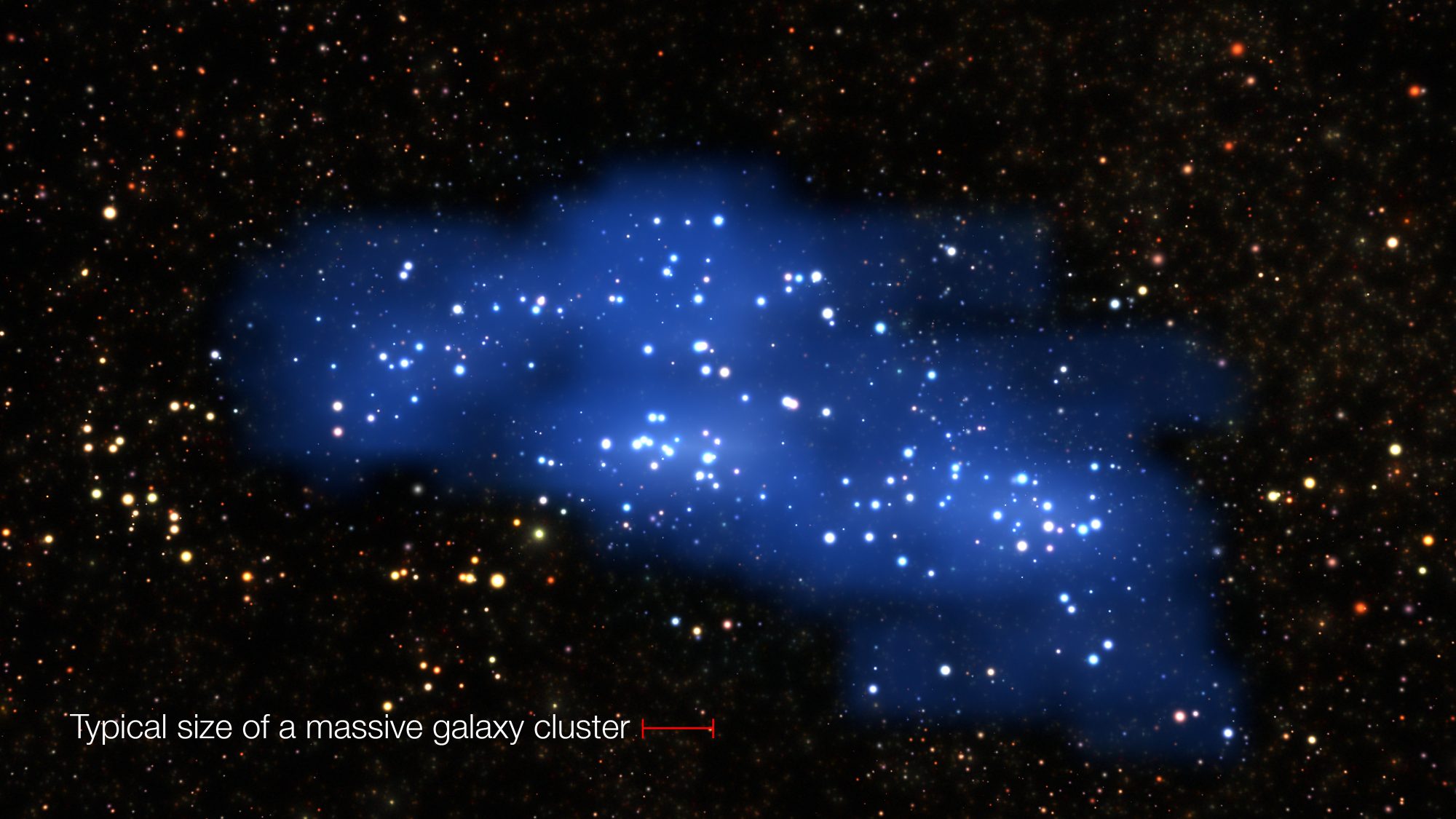Hyperion, a supercluster of galaxies in the early universe
The vast expanse of the universe has one advantage: because the light from the farthest reaches of the universe takes so long to get to us, astronomers can gain insight into its early history. Scientist’s latest discovery: galaxy superclusters apparently formed relatively early – as shown by one structure that scientists have named “Hyperion.” The gigantic proto-supercluster was identified by a team of astronomers led by Olga Cucciati from the Istituto Nazionale di Astrofisica (INAF) Bologna (Italian Institute of Astrophysics in Bologna) with the VIMOS instrument on the European Southern Observatory’s Very Large Telescope (VLT).
Hyperion, observed approx. 2.3 billion years after the big bang, is the largest and most massive structure yet discovered so early in the creation of the universe. It contains the mass of approx. one billion Suns. Galaxy superclusters like the Sloan Great Wall or the Virgo supercluster, in which the Milky Way is located, are normal today. But the discovery that Hyperion already existed so early in the universe’s creation was a surprise to astronomers.
“This is the first time that such a large structure has been identified at such a high redshift, just over 2 billion years after the big bang,” explained the first author of the article on the discovery, Olga Cucciati. “Normally, these kinds of structures are known at lower redshifts, that is, after the universe has had much more time to evolve and form such huge objects. It was a surprise to see something this evolved when the universe was still relatively young!”
Hyperion has a very complex structure and contains at least seven high-density regions that are connected by galaxy filaments. Present-day superclusters at closer distances look different: mass is not distributed as evenly in them. This might be because gravity has had much more time to collect matter into regions of higher density. Hyperion hasn’t had enough time to develop like this. “Understanding Hyperion and comparing it to similar recent structures can give insights into how the Universe evolved in the past and how it will evolve in the future. This gives us the ability to challenge some models of supercluster formation,” said Cucciati.
